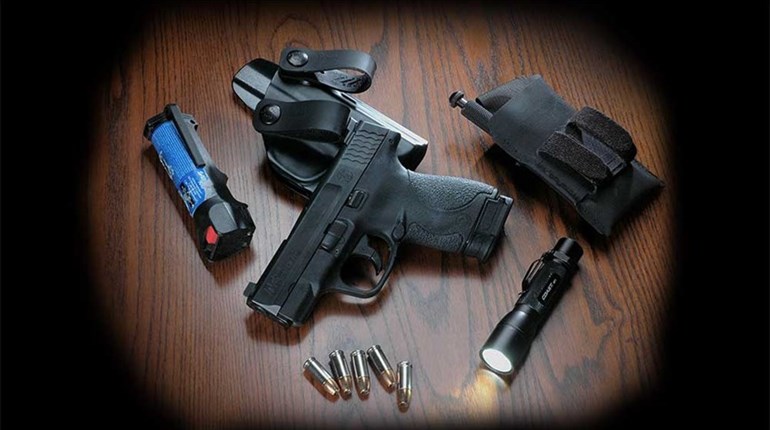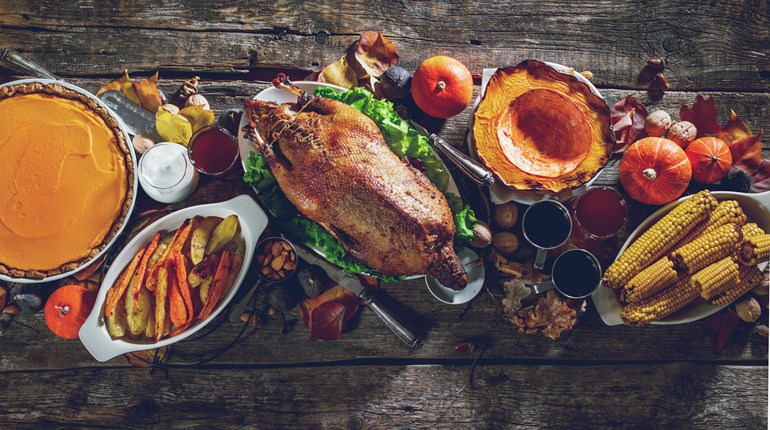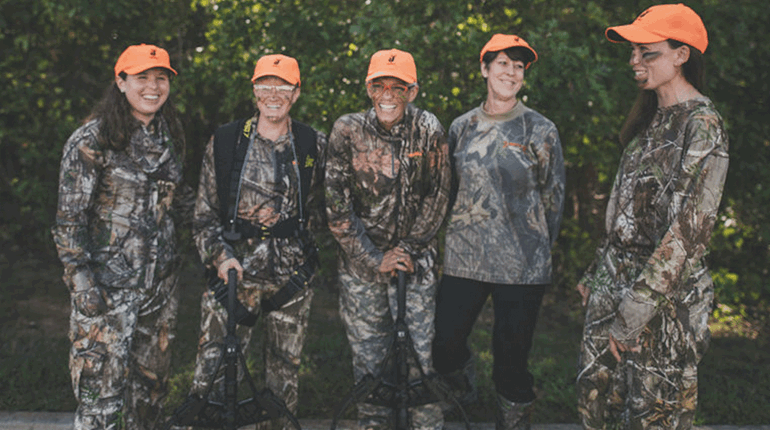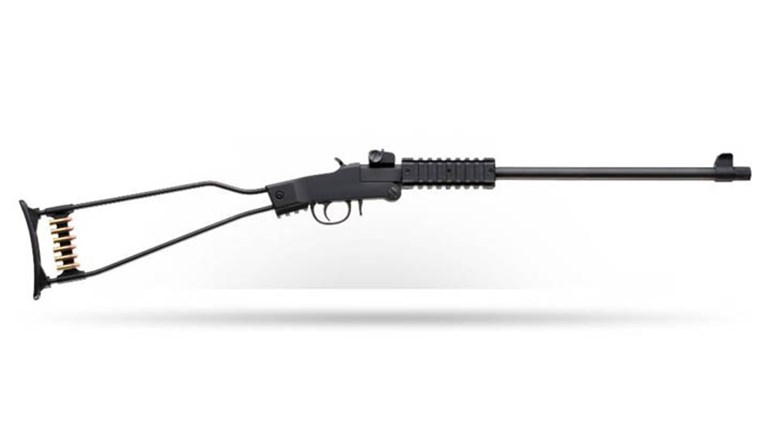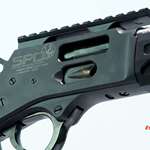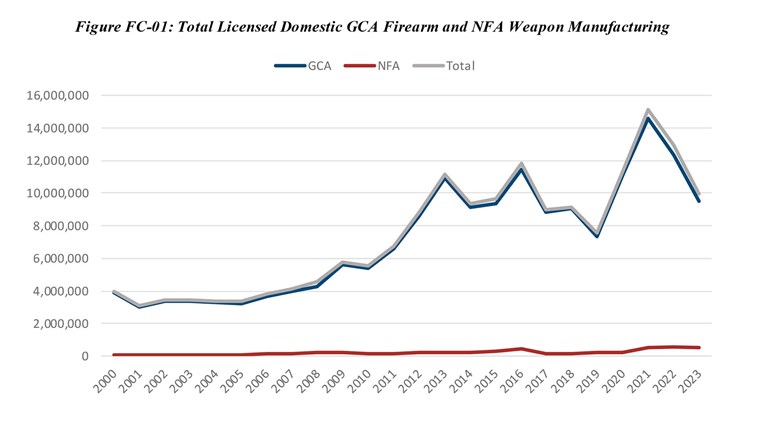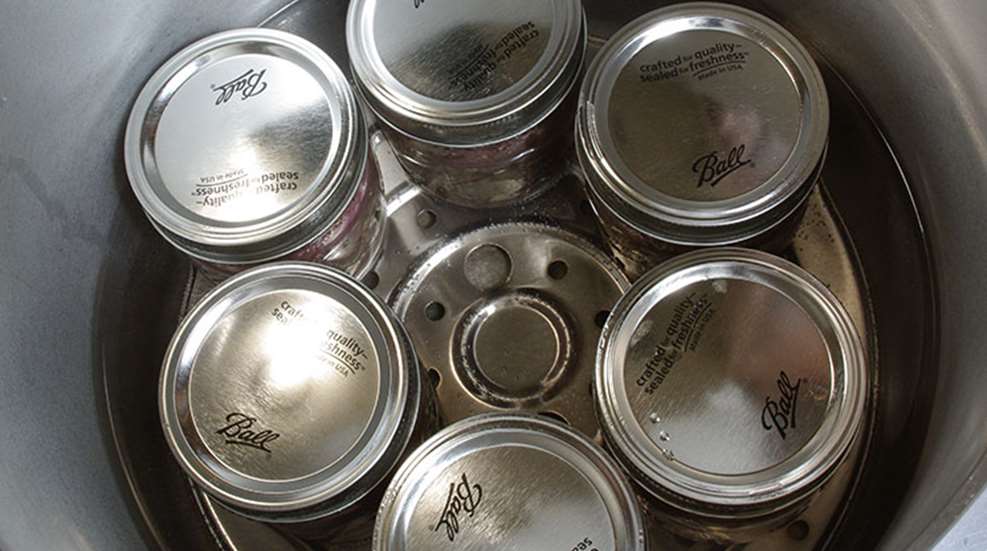
Once freezers became a fixture in the modern household the old ways of preserving food started to fade. It’s so much easier to just wrap up our venison and put it in a freezer. The thing is, some of those old ways had a lot of good things going for them.
One of those “old” ways is canning, which was very popular in the past. I can remember my mother and my aunts working for days every fall to can the produce from our gardens and the wild fruits and berries they had picked. My grandmother canned the venison from the deer my grandfather shot. It’s been half a century, but I still remember how good that meat tasted right from the jar. I doubt many kids today have those kinds of memories.
With the growing prepper movement a lot of people, including me, are re-discovering canning. Canning venison is a great way to preserve the meat and to keep it for extended periods of time even without electricity.
I have also rediscovered the unique flavor of wild venison that has been preserved through canning. Canned venison is excellent in various recipes like stew, stroganoff, spaghetti sauce or chili. But, my favorite way is to open a jar and eat it cold for lunch while sitting on the tailgate of my truck. It’s a great treat for any hunting trip. I love to dip out the meat with a plastic fork, sprinkle a bit of salt and scarf it down. It’s moist and full of flavor.
Canning won’t replace freezing. I still love backstrap grilled medium rare over a wood fire and you can’t do that with canned meat. Canning is another tool in the box for using wild venison. One that I urge any hunter to look into. You are pressure cooking the meat, so it can help to tenderize some of the tougher cuts.
The books say that canned meat will last a year or more if stored in a cool, dry place. That’s about the same time the books say that frozen meat will last. I suspect that’s being cautious for both.
Canning is very simple. In fact, it’s so simple I thought I must be doing something wrong, but I wasn’t. It’s also very safe if you follow instructions well.
The key to canning meat is that you must use a pressure canner. Meat is considered a low acid food, which means it’s a good environment for bacteria and other nasties to grow. A pressure canner raises the heat high enough to kill off all the bad stuff. Then the canning process vacuum seals the jars to ensure nothing can enter. Without those microscope critters to reproduce and spoil the meat, it keeps for a very long time.
The reason we need a pressure canner is simple. At sea level water boils at 212 degrees Fahrenheit, which is not hot enough to kill all the bad stuff that makes food spoil. Once water is boiling, it will not raise further in temperature. The higher the elevation, the lower the boiling temperature. At 5,000 feet of elevation the boiling point is down to 203 degrees. So the need is even greater for a way to increase the heat.
A pressure cooker is a sealed unit that builds and holds steam pressure at a set point, usually 10 or 15 pounds. This increases the ambient boiling temperature for water to 240 degrees (at sea level) at ten pounds pressure and 250 degrees for 15 pounds of pressure. The rise in temperature insures all the bacteria, mould and yeast are killed off. The meat is cooked and it’s sterilized so it stays preserved and safe.
The key to any good venison is preparation. You must remove all the fat. The fat in venison is what gives it that undesirable flavor. Canning enhances the flavors, so even a little bit of fat will spoil the taste. Trim all the fat and as much connective tissue and silver skin as you can. The goal is to have just lean red muscle meat.
You can grind the meat or cut it into pieces. I cut mine into stew size pieces, but you can even use small steaks if they fit in the jar.
There is no need to sterilize the jars for pressure canning as the process will sterilize them, but you should of course have them washed and clean. Follow the instructions for your canning jars and if it calls to preheat the lids, keep them in a water bath at 180 degrees F. It’s a good idea to keep the jars in there too so they are pre-heated.
To figure how much meat I needed I weighed the jars, empty and then full. My empty pint jars weigh about 10 ounces. When full of meat they are 1.5 pounds. So each jar holds about 14 ounces of meat. Of course that will vary with the way you cut the meat and the style and brand of jar. We prepared enough meat to fill the jars and a bit extra. The extra I cooked for our dinner that night.
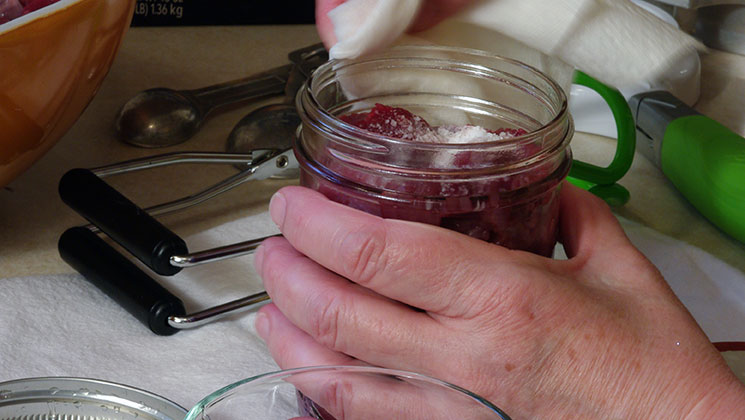
There are two methods to can venison. The first is raw pack, when you pack as much raw meat as you can into the pre-warmed jar. You must leave a headspace, usually one inch, at the top. Remove as much air as possible by packing the meat tight. Most recipes call for a teaspoon of salt per quart, but it is optional. Do not add liquid for raw pack as the cooking meat will form its own juice.
The second way is hot pack and I think you get a better product with this method. Brown the meat on high heat in olive oil using a large pan or pot.
Browning induces the Maillard reaction which enhances the flavor of the meat. It is a chemical reaction between amino acids and reducing sugars that occurs as the food browns and it gives browned food its desirable flavor. It’s what makes bread crust, seared steak and toasted marshmallows taste so good.
I use a 5 quart cast iron Dutch oven (without the legs) for this, but a large frying pan will work well too. You will need to brown the meat in batches and keep it warm after you are done. I put mine in a crock pot until I am ready for it.
Pack the meat as tightly as you can into pre warmed jars, leaving the proper headspace. Add enough water to fill all the jars to the juices from browning the meat left in your pan. Bring this to a boil and fill each jar to the headspace level with the boiling broth. Add salt if desired, a teaspoon per quart. Remove any air bubbles with a plastic spoon handle or similar tool.
For both methods, wipe the jar mouth clean and install the lid and the band, screwing the band finger tight. If you are not sure what constitutes “finger tight” for about ten bucks you can buy a “torque wrench” tool to tighten the bands. The lids must be able to release pressure as everything heats up and then seal on the jar to form a vacuum as it cools, so you don’t want it gorilla tight.
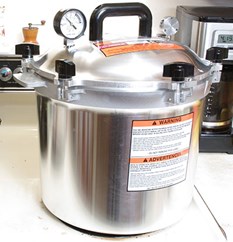 Put two to three inches of water in the canner. Stack the jars of meat on a rack in the canner and clamp the lid on tight. Bring it to a full boil and let the steam purge for ten minutes to remove all the air from the pressure canner. Then add the pressure. With my All American Pressure Canner that simply means putting the correctly numbered weight on the vent. You will need to adjust the heat source according to the instructions with your canner to maintain the correct pressure and temperature. With mine, I make sure the jiggle weight moves every 15 seconds and that the pressure on the gauge is at 10 pounds.
Put two to three inches of water in the canner. Stack the jars of meat on a rack in the canner and clamp the lid on tight. Bring it to a full boil and let the steam purge for ten minutes to remove all the air from the pressure canner. Then add the pressure. With my All American Pressure Canner that simply means putting the correctly numbered weight on the vent. You will need to adjust the heat source according to the instructions with your canner to maintain the correct pressure and temperature. With mine, I make sure the jiggle weight moves every 15 seconds and that the pressure on the gauge is at 10 pounds.
Cook at this temperature for one hour fifteen minutes for pint jars or one and one half hours for quart jars. When you are done, turn off the heat and let everything cool down so the pressure will drop. Follow the instructions with your canner to vent all the pressure and steam before you open the canner. Be careful, it’s very hot.
Once it’s safe to open the canner, remove the jars and place them on a cooling rack or folded towels to cool. You should hear a clicking sound as they cool indicating that a vacuum has formed and sucked the indicator button on the lid down. If you do not get a good vacuum, refrigerate the meat and eat it soon. If you have a good seal, let it cool at least overnight and then put it into storage for some tasty eating at a later date.
How to Make Sure Your Canned Meat is Safe to Eat
Canned meat is very safe, as long as the vacuum seal is maintained. If it leaks the meat can spoil.
Before opening your canned venison, look the jar over. Do you see any leakage? Doe the meat look good, nothing grossly discolored, no foam, bubbles or obvious spoilage? Any meat outside of the liquid may discolor, but that’s normal.
Can you pull the lid off with your fingers? It should require a can opener to pry the lid off. Is the indicator button in the center of the lid down? It should be, to indicate a vacuum. If it’s popped up the food is not safe to eat.
Pry off the lid and you should hear a slight hissing when the vacuum is released. Check for any obvious spoilage or foul odors.
If the canned meat fails any of these tests, do not eat it and do not give it to your pets. Dispose of it safely.












